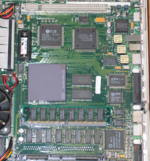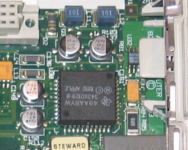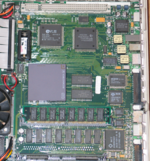CompactManiac
Well-known member
I took another look at the logic board in my Performa 475 which is now over 30 years old.
I don't see any signs of dulling solder joints or leakage so far.

It could do with a wash though to clear out some surface dust and clean the contact areas. The fan duct also needs cleaned.
I'd like to keep this one as I like how powerful the 475 was for its size and weight but the recap for this will need to wait as others are more urgent.
I don't see any signs of dulling solder joints or leakage so far.

It could do with a wash though to clear out some surface dust and clean the contact areas. The fan duct also needs cleaned.
I'd like to keep this one as I like how powerful the 475 was for its size and weight but the recap for this will need to wait as others are more urgent.


